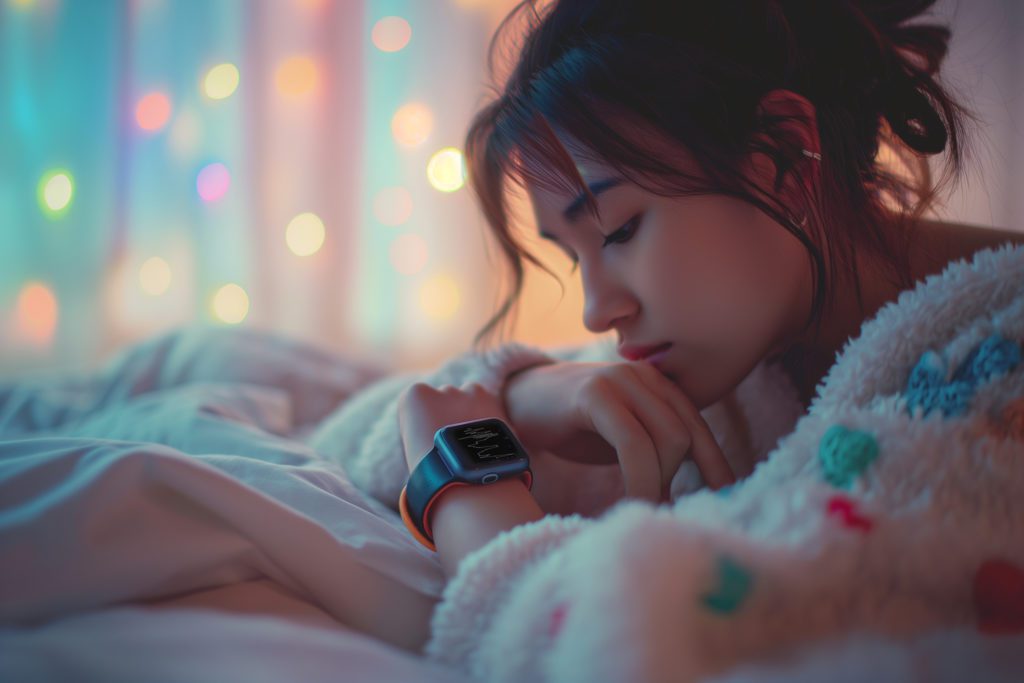
Innovative Sleepwear: How Technology is Shaping What We Wear to Bed
What do you wear to sleep? Discover some of the latest innovations in sleepwear and how technology could forever change our pajamas.

Over the years, our sleepwear has changed rapidly, continuously innovating to become more comfortable, efficient, and modernized. What once used to be simple cotton clothing has now become something far more transformative, changing how we perceive and use our sleepwear. People have begun to incorporate new sleep technology to improve sleepwear, including more modern fabrics and even some connectivity features that can adjust our nighttime environments as we sleep.
In this article, we’ll explore just how technology is shaping what we wear to bed, taking a look at smart fabrics, moisture-wicking materials, and more. We’ll also explore the latest innovations researchers have found regarding sleep-tracking integrated pajamas and responsive sleepwear and what this means for our nightly rest. Finally, we’ll also look at some futuristic sleep support that may come in the future, including some ideas that are currently in development or already available.
Technological Innovations in Sleepwear Materials
While we might not have sleepwear that can automatically respond to our every need, we have certainly seen so many innovations in recent years. One of the first is the use of “smart fabrics”, or those that are able to regulate body temperature, so you never have to be too hot or too cold when you’re resting at night.
For example, the use of far infrared radiation (FIR) fabrics has been incorporated into bedding, sleepwear, and more, all of which have demonstrated that people felt well and comfortable while using these products. The reason for this is that the fabric helps them maintain their body temperature, keeping them warm and cozy all night long. It is this sort of invention that has changed sleepwear and made it even easier for us to relax, but we also haven’t even explored moisture-wicking technology, which is another crucial invention in sleepwear in recent years.
Moisture-wicking fabrics are made of the same sort of fabric as high-performance gear, allowing you to stay cool and dry even if you wake up sweating. If you choose the right pajamas, you can enjoy optimal rest, and the moisture will simply move away from your skin and evaporate rather than soak into your clothing and skin.
These sorts of innovative materials have changed the future of sleepwear, but there are also changes in terms of the technology implemented into these clothes. You might be surprised by how advanced our sleepwear has become, as many pajamas are starting to include sleep-tracking and responsive features.
Connectivity Features in Sleepwear to Measure Our Rest
Over recent years, many researchers have proceeded to find ways to incorporate technological elements into sleepwear and pajamas. This goes further than the use of specific fabrics; it integrates machine technology that can actually help us understand our sleep, primarily through the use of sleep-tracking features.
In 2019, intelligent pajamas were introduced with self-powered sensors that did not disrupt sleep but could measure one’s heartbeat, breathing, and sleep posture. Having this data available can help people understand their quality of rest and how to improve it over time. This sort of technology could directly change how we study sleep and what we understand about rest!
While no new products have been released yet, the fact that people have created self-powered sensors means that sleepwear is well on its way to developing this new form of pajamas. Some of the benefits that could be enjoyed in the future due to responsive sleepwear include temperature adjustments due to body temperature or even movements, making it more comfortable for people overnight.
All of these new pajamas might seem unnecessary, but think about the possibilities: What could you do if you had access to this sort of technology? What insights would it provide you, and how much better would your sleep be? That’s largely why people are thrilled to see these developments, as well as the use of wearable sleep aids for even more added comfort and support.
Wearable Sleep Aids: Where We Are Now and the Future of Sleep Technology
While people dream about the potential for pajamas or sleepwear that provides massages or even has a built-in speaker so we can listen to white noise with ease, several futuristic wearable sleep aids that are already in use today have changed what we wear to sleep and why.
One of the most interesting has been the use of a wearable headband that was designed to help limit sleep onset, making it easier for us to get to bed instead of lying awake and struggling to fall asleep (Source: Scientific Reports). However, this is still in its development stage, so it’s not a widely used product by any means. Yet, people still have other wearable devices that they have used, including wearable wrist-based devices or even rings.
According to Harvard Health Publishing, wearable wrist-based devices help us understand more about our sleep, but they don’t necessarily enhance our sleep at all. They’re simply for measuring and understanding our rest and how we can improve it. Other scholars have also supported this same conclusion, arguing that wearable sleep technology can undoubtedly help us, but we must take steps to navigate the use of these tools so that they genuinely provide more expansive, insightful information for us to use to our advantage.
As we look ahead to the future, it will be interesting to see how sleepwear will change because of technology. There may be a future where our wristbands are replaced by sleepwear that incorporates the same technology into the fabric, making it so that we always understand our sleep. All that we know for sure is that technology will continue to make our pajamas even more innovative, allowing us to use tools to enhance our rest and recovery.
How Will You Use the Power of Innovative Sleepwear?
Sleepwear is becoming increasingly advanced over time, as people now have access to smart fabrics, connectivity features, and even wearable sleep aids. Even if these technologies are not yet available to the public, their discovery signals one crucial conclusion: our sleepwear is going to become even more advanced to benefit our health and potentially even more responsive to our needs.
We hope that this article was informative and that you learned something new! For more information about sleep health and the future of sleep, check out our website for more articles.

Written by
Marie Soukup
Marie Soukup is a seasoned copywriter, editor, and Integrative Nutrition Health Coach with a certificate from the Institute of Integrative Nutrition (IIN). With years of experience working with brands across diverse industries, Marie is passionate about holistic health and crafting compelling content.
Download Pillow
Get help
Press & News
Legal
Connect
X (Twitter)
Company
Copyright © Neybox Digital Ltd.



